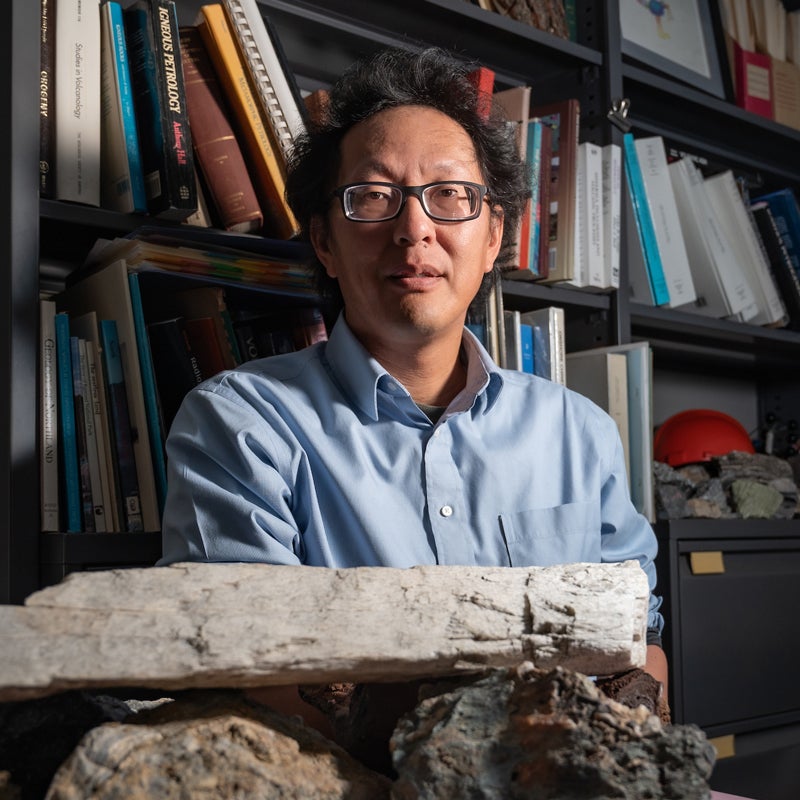
When Cin-Ty Lee joined Rice in 2002, his mentors offered sage advice about earning tenure: Focus. It was good advice, he said, but it wasn’t his way. His curiosity about all things geological has led him to research in fields as varied as geochemistry, petrology, geophysics and planetary dynamics.
But the approach served him well, earning him tenure and major awards, and allowing him to see connections that make him a better geologist, Lee said.
“I guess I knew things were connected when I started 20 years ago, but I didn’t see all of the connections because I didn’t know as much,” he said.
A good example is one of the latest questions that captured his attention: Why do some oilfield brines contain a lot of lithium while others do not?
Oilfield brine is salty groundwater that comes out of oil wells. It is especially plentiful from wells where water has been pumped in at high pressure to fracture, or frack, rock, releasing greater volumes of oil.
Lee believes the source of lithium in oilfield brines is volcanic ash. He said some geologists might also make that connection if they had seen some of the proprietary seismic data from the oil industry that he has seen.
“But even seeing it may not necessarily trigger that idea,” Lee said. “I think you have to understand the whole connection of the big picture and the small picture. Everything out there is connected.”

Having previously investigated the role of ancient volcanic ash in unconventional oil deposits in North America, that was a connection Lee could easily make. In a sense, he said, his current work on lithium mirrors most of his previous work on ore deposits, be they from copper, tungsten, cobalt or any of a dozen other elements.
“I’m not necessarily searching for ore deposits,” Lee said. “It's just so fascinating. For an element that otherwise occurs in trace quantities, like lithium or copper, to find its way into a major deposit, the stars must align. Each deposit is a puzzle, and I love these puzzles.”

And each puzzle is different. For example, questions about lithium in oilfield brines would be purely academic if lithium weren’t in such high demand for electric batteries. It’s not clear whether oilfield brines are a practical source of lithium, but briny groundwater from South America provides many tons annually, as do ores from traditional belowground mines in Australia and other countries.
Lee has also investigated how lithium made its way into those ore deposits. Each case is a detective story that invariably leads to new questions.
One of those — What controls the thickness of Earth’s crust? — is particularly intriguing, he said, because crustal thickness is intimately connected with a host of things beyond mineral deposits.
“Our research group has become obsessed with crustal thickness,” Lee said. And their work is leading to answers far from Earth’s lithium mines — more than 100 million miles from them.
“We showed that crustal thickness on Mars has implications for how hot the crust is,” Lee said. “The thick crust beneath Mars’s southern hemisphere would have made it hot enough to sustain a thick aquifer of groundwater billions of years ago.”

